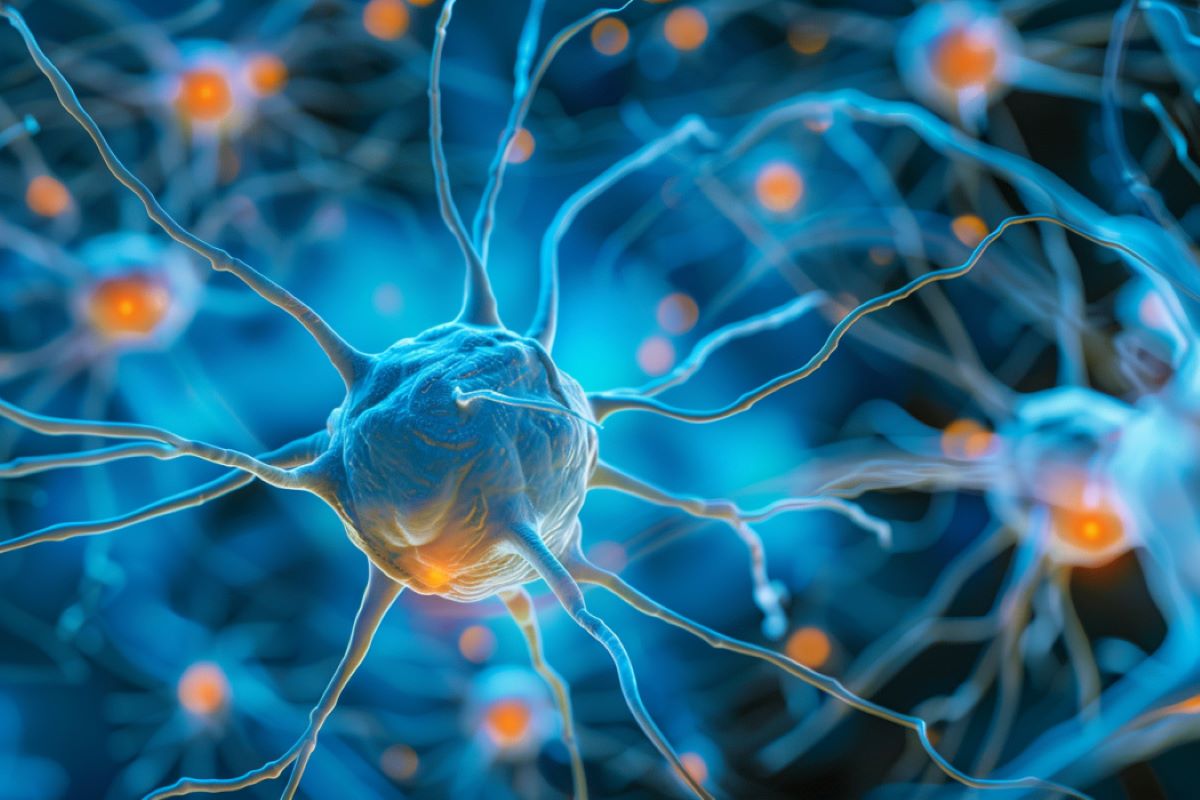Summary: Researchers have identified four subtypes of ALS, which could lead to more effective personalized treatments. The study also highlights significant molecular differences between men and women with ALS.
A promising drug target, the MAPK signaling pathway, has been identified, which could lead to new treatments. These discoveries bring us closer to understanding and treating this deadly neurodegenerative disease.
Highlights:
- Four subtypes of ALS: ALS can be divided into subtypes with different molecular mechanisms.
- Gender differences: Significant molecular differences were found between men and women with ALS.
- Drug target: The MAPK signaling pathway is a promising target for new treatments for ALS.
Source: TUM
Amyotrophic lateral sclerosis, or ALS for short, is a mysterious neurodegenerative disease that is almost always fatal.
A consortium of researchers led by the Technical University of Munich (TUM) has systematically investigated the molecular mechanisms underlying ALS. Among other things, the team discovered that ALS can be divided into subtypes.
Depending on the subtype, different medications may be effective. There are also clear differences in molecular processes when comparing men and women. Additionally, researchers have identified a promising target for new ALS drugs.

The molecular processes in the body that cause ALS patients to increasingly lose control of their motor functions are still poorly understood. Previous studies have been limited to individual aspects of the underlying molecular processes.
A consortium led by Professor Paul Lingor, a neurologist at TUM, studied ALS using a so-called “multiomics” approach. The researchers mapped coding and non-coding RNA molecules as well as entire proteins.
Four subtypes
One of the main findings of the study is that ALS can be roughly divided into four subtypes.
“We cannot distinguish these variants on the basis of clinical symptoms,” explains Paul Lingor, who, with other researchers, is part of the SyNergy center of excellence which studies neurodegenerative diseases.
“However, very different things happen at the molecular level. This means that an active substance that is ineffective in one subtype of ALS may well prove useful in another. Previous clinical studies could only examine the effects on all patients and may not have identified substances effective for an individual subtype.
While in one common subtype genes associated with inflammatory processes and immune responses were affected, in another there were mainly disruptions in the transcription of DNA into RNA molecules. In two other cases, different signs of oxidative stress were found in the cells. Researchers assume that the ALS subtype may change over the course of the disease.
Promising drug identified
Men develop ALS approximately 1.2 times more frequently than women. Breaking down molecular processes also revealed clear gender differences. Although all four subtypes appear to occur equally frequently in both sexes, researchers found a significantly higher number of altered gene products in men.
From the researchers’ point of view, this could mean that in the future, men and women will have to be treated differently.
Using multiomics analysis, the researchers also identified a signaling pathway that could be a particularly suitable target for new ALS drugs.
“This signaling pathway, MAPK, is well described in neurobiology and plays a role in various, but not all, ALS processes,” explains Professor Stefan Bonn, co-last author of the study and director of the Institute for Medical. Systems biology at the University Medical Center Hamburg Eppendorf (UKE).
From the researchers’ point of view, it would therefore be promising to repurpose an approved anticancer drug that acts on MAPK for ALS.
Basis for future studies
The study is based on tissue samples from deceased ALS patients and additional investigations using mouse models of the disease.
“An important next step is to find a way to determine the ALS subtype in patients who are still alive – we are currently working on this,” says Paul Lingor.
“We believe our study has made an important contribution to research into the causes and treatments of ALS. Our findings have brought us much closer to more personalized and, therefore, more effective therapy.
About this ALS research news
Author: Paul Hellmich
Source: TUM
Contact: Paul Hellmich – TUM
Picture: Image is credited to Neuroscience News
Original research: Free access.
“ALS multiomic signatures highlight subgroups and gender differences, suggesting MAPK pathway as therapeutic target” by Paul Lingor et al. Natural communications
Abstract
ALS multiomic signatures highlight subgroups and gender differences, suggesting MAPK pathway as therapeutic target
Amyotrophic lateral sclerosis (ALS) is a debilitating motor neuron disease for which effective disease-modifying treatments are lacking. This study uses a comprehensive multiomics approach to investigate early and sex-specific molecular mechanisms underlying ALS.
By analyzing the prefrontal cortex of 51 sporadic ALS patients and 50 control subjects, as well as four transgenic mouse models (C9orf72-, SOD1-, TDP-43- and FUS-ALS), we discovered significant molecular alterations associated with the disease. Here we show that males exhibit more pronounced changes in molecular pathways than females.
Our integrated analysis of transcriptomes, (phospho)proteomes and miRNAs also identified distinct subgroups of ALS in humans, characterized by variations in immune response, extracellular matrix composition, mitochondrial function and RNA processing. Molecular signatures of human subgroups were reflected in specific mouse models.
Our study highlighted the mitogen-activated protein kinase (MAPK) pathway as an early mechanism of the disease.
We further demonstrate that trametinib, a MAPK inhibitor, has potential therapeutic benefits in vitro and in vivo, particularly in women, suggesting a direction for the development of targeted treatments for ALS.